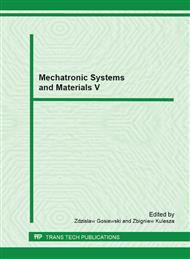[1]
J.F. Bogdanoff, F. Kozin, Probabilistic models of cumulative damage. John Wiley and Sons, N.Y. (1985).
Google Scholar
[2]
J. Drewniak, Probabilistic B-models of cumulative fatigue damage. Journal of Theoretical and Applied Mechanics, 34, 1996, 355-370.
Google Scholar
[3]
K. Łukaszewicz, W. Osipiuk, The fatigue life prediction of notched elements. Acta Mechanica et Automatica. Vol 5, Nr 1 (2011), pp.53-58.
Google Scholar
[4]
J. Rysiński, Ocena trwałości i wytrzymałości zmęczeniowej na złamanie zęba prostego walcowego koła zębatego : rozprawa doktorska, University of Bielsko-Biala, (2003).
Google Scholar
[5]
D. M. Tracey, Finite elements for determination of crack tip elastic stress intensity factors, Eng. Fract. Mech., 3, str. 255-265, (1971).
DOI: 10.1016/0013-7944(71)90036-1
Google Scholar
[6]
D. Kujawski, Trwałości zmęczeniowa metali, Wydawnictwa Politechniki Warszawskiej, (1991).
Google Scholar
[7]
K. Gołoś, Trwałość zmęczeniowa stali w ujęciu energetycznym, Wydawnictwa Politechniki Warszawskiej, 1989 (in Polish).
Google Scholar
[8]
P. Paris, F. Erdogan, A critical analysis of crack propagation laws, Trans. ASME 85, str. 528-534, (1963).
DOI: 10.1115/1.3656902
Google Scholar
[9]
J. R. Rice, A path independent integral and the approximate analysis of strain concentration by notches and cracks, J. Appl. Mech. ASME, 35, str. 379-386, (1968).
DOI: 10.1115/1.3601206
Google Scholar


